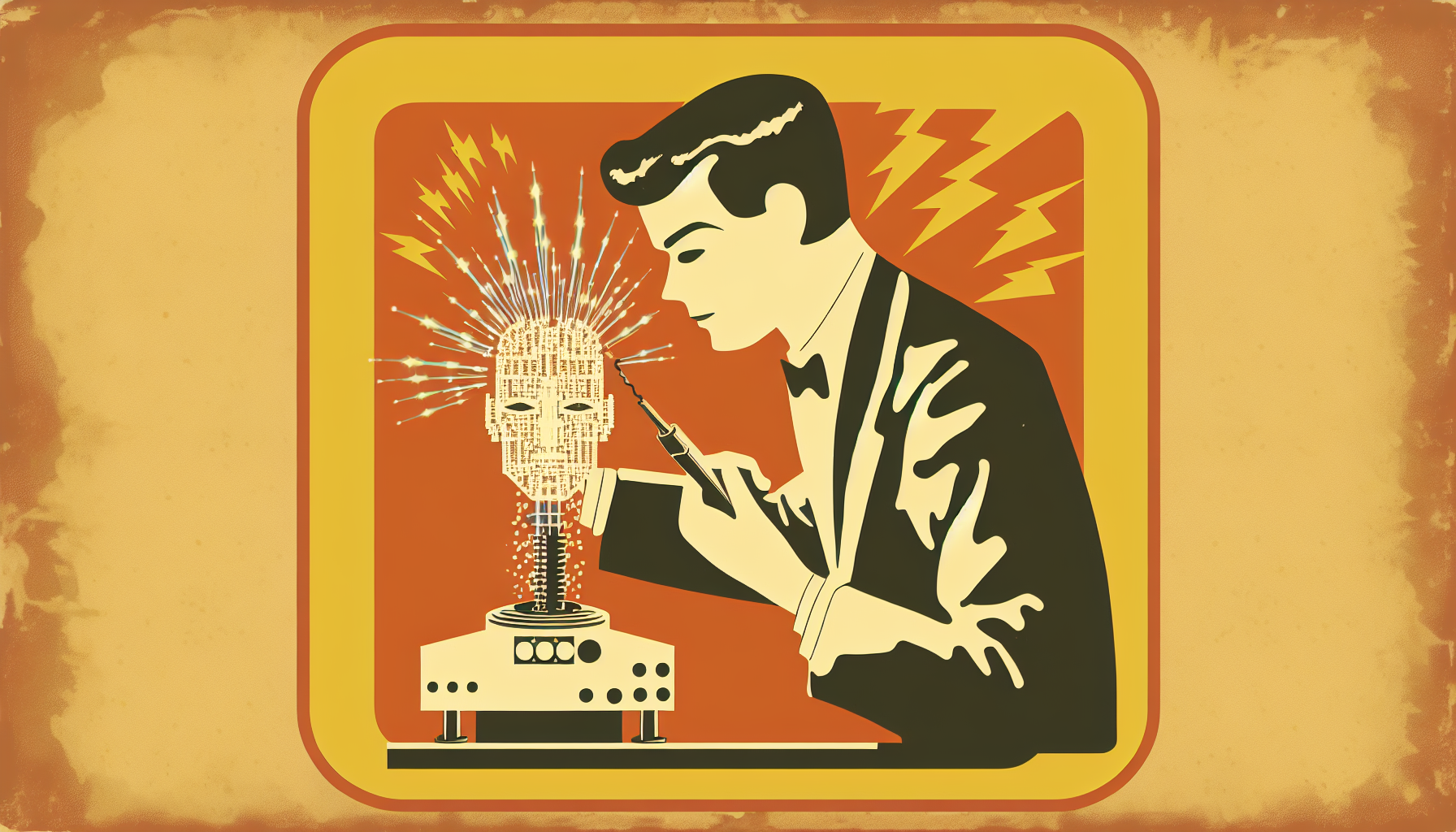In the grand adventure of human history, few quests have tantalized as much as the pursuit of creativity. We celebrate it in art galleries, commemorate it in libraries, and occasionally, bemoan its absence during mandatory PowerPoint presentations at work. Yet, there is a new player in town—Artificial Intelligence (AI)—striving to outdo Picasso with its own electronic masterpieces. But here lies the paradox: can a creation of logic and code truly generate original thought? Gather ’round, friends and skeptics, as we unravel this enigma.
The Yin and Yang of AI Creativity
On the one hand, AI has achieved the miraculous feat of creating art, composing music, and even writing poetry that could make Shakespeare raise a bemused eyebrow. On the other, it does so by analyzing vast amounts of existing work, finding patterns, and generating something that, at first glance, resembles creativity.
Let’s use an analogy here. Imagine AI as a chef who has never tasted food but has read every cookbook ever written. It can mix and match recipes to serve up a dish that delights your palette, but can we stretch our culinary metaphor so far as to call this cooking by intuition?
AI’s “creativity” feels less like an act of creation and more like an impressive magic trick—a dazzling illusion borne of programming and probability, rather than an authentic flutter of inspiration.
When Shakespeare Wrote with a Quill, Not Ones and Zeros
Human creativity, for better or worse, is often tinged with a hint of chaos. Our dreams, flaws, and desires all stir together as paint on a messy artist’s palette, resulting in a canvas that is unpredictably unique. AI, by contrast, operates with precision and predictability. It lacks the very whims and weaknesses that often lead to groundbreaking human creativity.
Consider the process of innovation. Humans are known for making leaps that initially don’t make a lick of sense—only to circle back and connect the dots in hindsight. Meanwhile, AI follows logic to an outcome, making its path less of a leap and more of a calculated step. The very lack of error-prone judgment hampers AI’s ability to think outside the proverbial box. Paradoxically, our fallibility is precisely what facilitates our creativity.
The Birth of Programmed Prodigies
It seems fair to ask if AI can generate something truly novel and groundbreaking. The natural world is teeming with phenomena that inspire humanity, like a neuron firing in an artist’s brain as they lay eyes on the fiery tendrils of a sunset. Could an AI, without those neurons, have the same epiphany?
This question circles back to the mind-numbing concept of originality itself. Isn’t all creation, to some extent, inspired by the input the creator has digested? In a sense, AI mimics the way artists have been learning for centuries—by absorbing existing works and building upon them. One might argue that’s precisely what children do in classrooms worldwide.
Curious Creativity or Clever Code?
While the philosophical quandaries tempt us to philosophize over Earl Grey, AI art nonetheless symbolizes progression. It challenges the very definition of creativity, forcing us to confront where we believe inspiration resides—does it lurk in the synapses of the human brain, or can it perhaps exist in the cold circuits of a supercomputer?
Artificial Intelligence can indeed surprise and inspire, but make no mistake—its remarkable output is crafted from an amalgamation of pre-existing patterns and structures. Its creative display is akin to a museum experience seen through the lens of a kaleidoscope, transforming what’s already in sight—but still reflecting reality.
Where Do We Go From Here, Oh Paintbrush-Wielding AI?
As we navigate this brave new world, we must ponder the implications of AI creativity on society. When an AI-generated symphony emanates through concert halls, might we view human composers with different, perhaps more skeptical, eyes? There’s a fine line between inspiration and imitation. Determining where AI’s role sits along this spectrum will shape our artistic communities.
But let’s approach the dawn of AI creativity with a light heart as well as a rational brain. Think of AI-generated art as Pixar-released shorts at the start of a major picture—a tantalizing glimpse into technological marvels, yet nothing draws truer than the human experience itself.
In the meantime, the paradox of AI creativity continues to illuminate discussions over lunch breaks, dinner parties, and academic conferences. It’s an intellectual labyrinth that perplexes as much as it fascinates, a conversation mosaic of science and philosophy that AI artfully draws—and perhaps that’s the alluring charm.
As we slide into the future, keep an open mind and maybe, just maybe, indulge in a little whimsy over the question. Can an entity without a muse find its muse? A drop of logic may very well form a ripple of creativity. Who knows, perhaps the journey in pursuit of this answer is itself the most creative act of all.

Leave a Reply